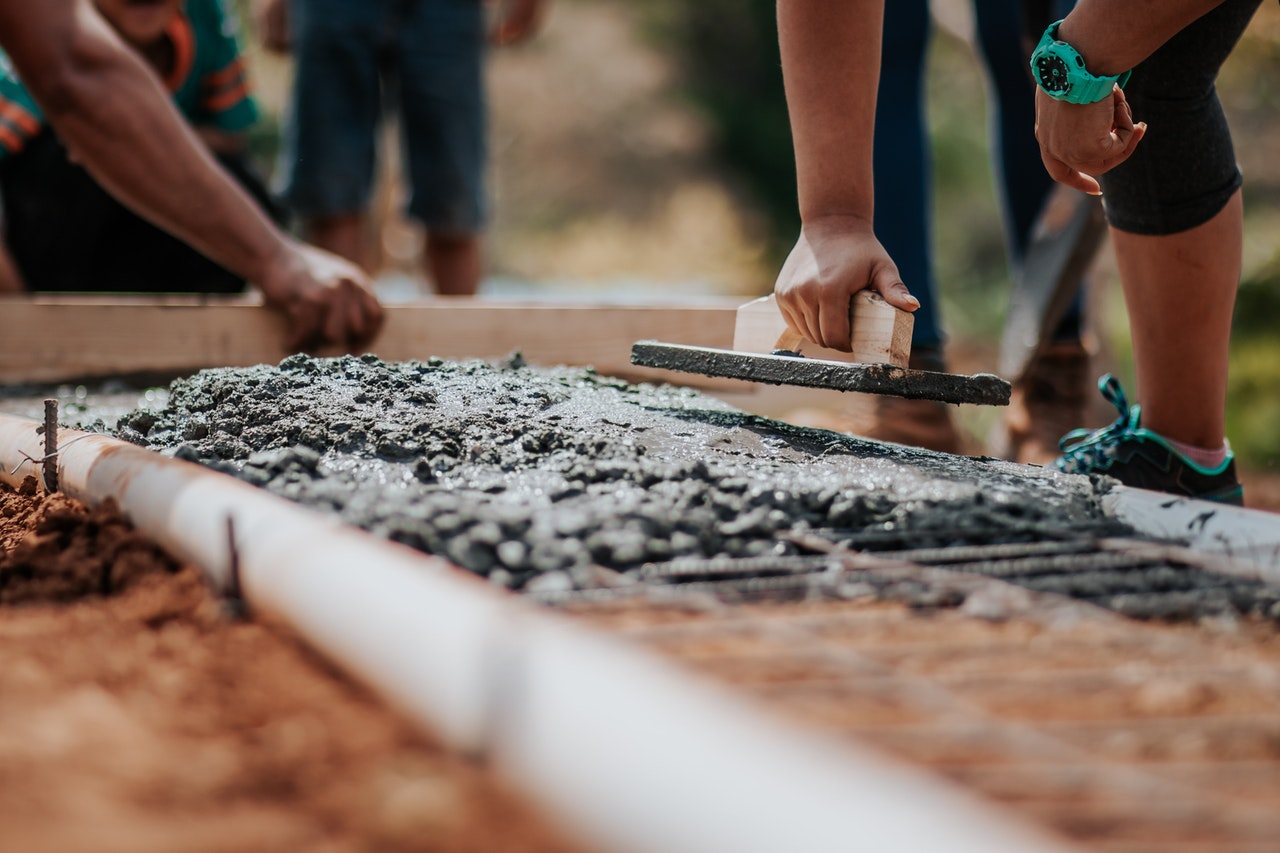
I learned this today. Concrete goes hard because the filler (usually something like gravel) is glued together by the binder (usually cement) through the process of hydration.
Concrete is probably the most common building material in the world. Without it, our cities would not look anything like they do. Concrete has been with us for thousands of years and the Mayans made some parts of houses with it.
Concrete really came into its own during the Roman Empire. They built temples, palaces, the Colosseum, and the dome of the Pantheon, which is the world’s largest unreinforced concrete dome. Concrete spurred what became known as the Roman architectural revolution. The word itself comes from the Latin concretus, which means compact or condensed.
After the fall of the Roman revolution, the use of concrete also fell and people started to use far more brick. Concrete became popular again after the Industrial Revolution and Portland Cement was developed in 1824. Reinforced concrete was invented in 1849.
Concrete consists of a binder and a filler. The ingredients have changed over time, but currently, the binder is usually Portland Cement and the filler is an aggregate of loose rocks and sand.
Portland Cement is made by burning a mix of powdered limestone, clay, sand, and iron at temperatures of between 1400 and 1600℃. The powder is burned in a rotating kiln that is about 180m long and inclined downwards. The powder moves down the kiln and the temperature is gradually increased. All of the water is evaporated out of the powder which then starts to stick together in clumps. These clumps are called clinkers. The clinkers are cooled down after the kiln and then ground up and mixed with 2 to 3% of gypsum. Gypsum is a mineral and it is used to regulate the setting of the cement.
When making the concrete, the Portland cement is mixed with the filler and water. The cement is usually quite expensive, so up to 80% of the concrete might be made up of filler. The filler will be crushed stones or sand. The smoother the filler, the smoother the final concrete. The filler is washed to remove any impurities. Water is added to make the cement into a paste and it makes it much easier to use. Concrete is extremely useful because of its ability to flow into shapes. Once the concrete has been poured into its shape, it is left to cure. And this is where the strength of concrete comes from.
As soon as the water is added, the process of hydration starts. The Portland cement contains tricalcium silicate, tricalcium aluminate and tetracalcium aluminoferrite. All three of these react as soon as they come into contact with water. The tricalcium silicate starts to release calcium ions, hydroxide ions, and heat. This reaction slows down and the amount of heat drops. When the amount of calcium and hydroxide ions have saturated all of the mixture, calcium hydroxide is left and it starts to crystalize. Nodes form on the molecules and these nodes connect to nodes on other molecules, enveloping the stones and the sand in the filler. At the same time calcium silicate hydrate starts to form and the concrete starts to produce more heat. As the calcium hydroxide and the calcium silicate hydrate begin to link to each other, they form crystals that become a base for more calcium silicate hydrate to grow. The growing crystals encase all of the molecules in the filler and glue it in place. The concrete gets thicker and the reaction becomes slower and slower. Calcium silicate hydrate will continue to form for a long as there is water left in the concrete.
Concrete is generally hard after about 36 hours, but that depends on how much concrete was used and how much water was used. When the Hoover Dam was designed, for example, the engineers worked out that the concrete would be so thick it would take 125 years to cure. They managed to find a solution to that problem, but it shows that the more concrete you use, the longer it will take to cure.
Concrete also continues to get stronger over time. The calcium hydroxide in the concrete absorbs carbon dioxide from the atmosphere and becomes calcium carbonate, which strengthens the concrete even more.
So, concrete is made with a binder that is usually Portland cement and a filler which is usually small rocks and sand. When water is added to the mix, the Portland cement undergoes hydration and the molecule in it crystalize, making a very strong structure. And this is what I learned today.
Photo by Rodolfo Quirós from Pexels
Sources:
https://www.nachi.org/history-of-concrete.htm
http://matse1.matse.illinois.edu/concrete/prin.html
https://en.wikipedia.org/wiki/Concrete
https://en.wikipedia.org/wiki/Calcium_hydroxide
https://en.wikipedia.org/wiki/Hydrate
https://en.wikipedia.org/wiki/Portland_cement
https://en.wikipedia.org/wiki/Gypsum
https://www.cement.org/cement-concrete/how-concrete-is-made

